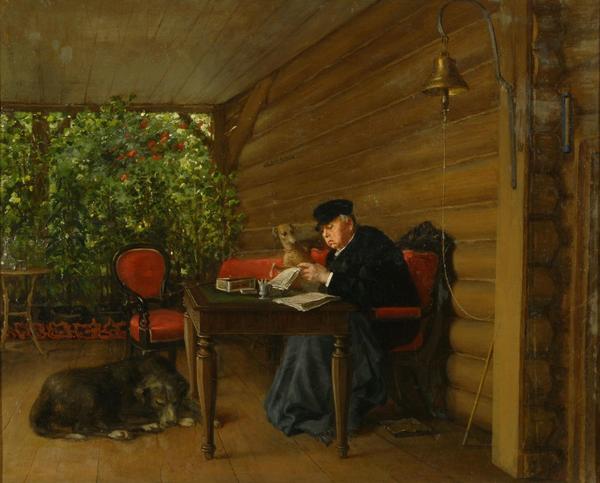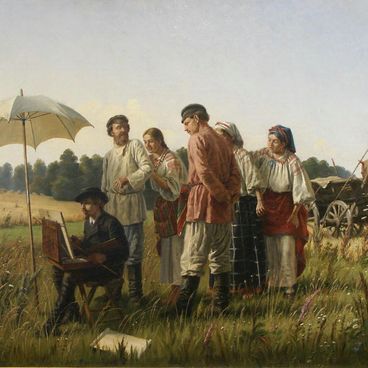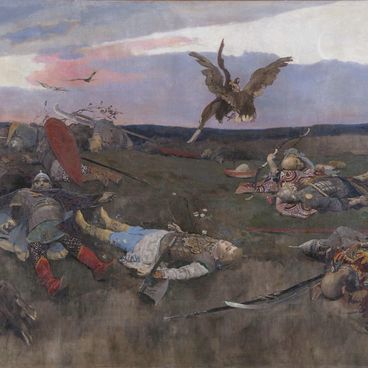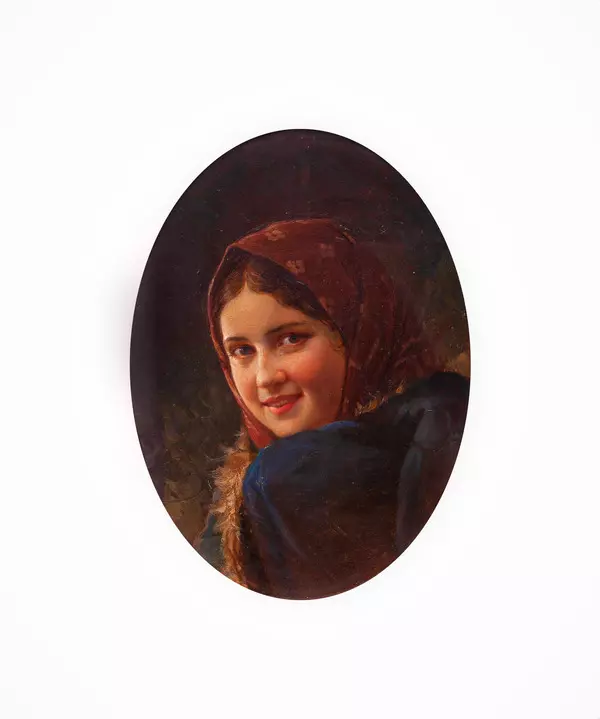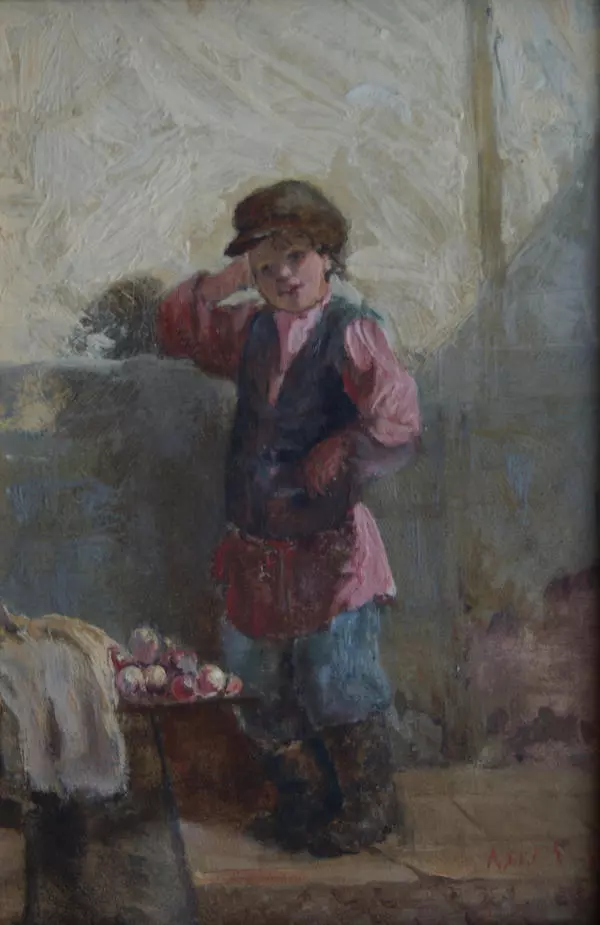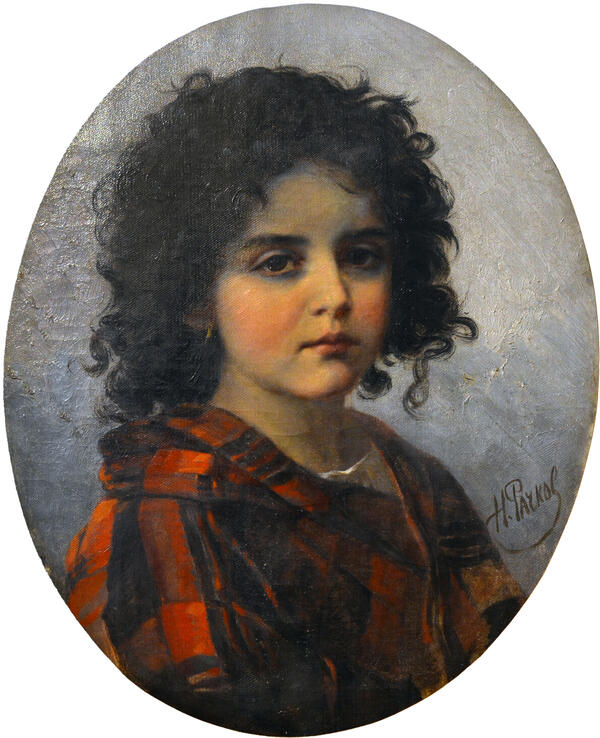The presented picture was painted by Nikolay Rachkov, a student of the Arzamas Art School. He was a popular and successful artist: his portraits and genre scenes were exhibited at many academic expositions — and even at the Paris World’s Fair in 1878. Rachkov’s works were bought by collectors, and the artist had never been left without orders.
The painting shows an elderly man sitting at the table in the corner of a wooden veranda. He is surrounded by everything that he loves so much: dogs, books and plants. However, behind this calm and cosy scene from the life of Pavel Pikulin, a famous 19th-century doctor, hides a very sad story.
This painting is the author’s version of the subject, known as the Portrait of a Patient and A Patient on the Veranda. Researchers believe that Rachkov created the portrait after 1859, when Pikulin had a stroke. A relative of the doctor, the famous collector of fairy tales Alexander Afanasyev wrote to the lawyer and ethnographer Yevgeny Yakushkin in November 1859: “Our news is bad: Pikulin had a stroke and he drags one foot; …it is a pity, a great pity. Pikulin is a good man, of noble convictions and is currently the only one around whom a circle of decent people is gathering. If there were not his Saturdays, I would not meet with some of them even once in six months”.
Pavel Pikulin was an outstanding doctor. He served in the therapeutic department of the hospital clinic at Moscow University, was an unsurpassed diagnostician, wrote the work The Theory of the Softening of the Brain and the Spinal Cord. The doctor taught students to tap their patients with fingers and palms, thus determining the cause of the illness. And many of his students “acquired stethoscopes and began to tirelessly listen and work their fingers to calluses”.
Pikulin had many famous friends: the historian Timofey Granovsky, the critic Vasily Botkin and his brothers, the poet Afanasy Fet, the actor Mikhail Shchepkin and many others. It was at the doctor’s dacha in Maryina Roshcha where Nikolay Gogol, Nikolay Nekrasov, Ivan Turgenev, Leo Tolstoy and other Russian classics would read their literary works before they even appeared in magazines.
At the dacha, ‘Pikulin preferred to indulge in the care of a flower greenhouse, an elegant gardening magazine and home dinner, made under his personal supervision according to all the rules of culinary art’, as Alexander Afanasyev recalled. And ‘in addition to the greenhouse and the garden, the doctor kept at the house a pack of dogs that annoyed his neighbours with loud barking’.
The painting shows an elderly man sitting at the table in the corner of a wooden veranda. He is surrounded by everything that he loves so much: dogs, books and plants. However, behind this calm and cosy scene from the life of Pavel Pikulin, a famous 19th-century doctor, hides a very sad story.
This painting is the author’s version of the subject, known as the Portrait of a Patient and A Patient on the Veranda. Researchers believe that Rachkov created the portrait after 1859, when Pikulin had a stroke. A relative of the doctor, the famous collector of fairy tales Alexander Afanasyev wrote to the lawyer and ethnographer Yevgeny Yakushkin in November 1859: “Our news is bad: Pikulin had a stroke and he drags one foot; …it is a pity, a great pity. Pikulin is a good man, of noble convictions and is currently the only one around whom a circle of decent people is gathering. If there were not his Saturdays, I would not meet with some of them even once in six months”.
Pavel Pikulin was an outstanding doctor. He served in the therapeutic department of the hospital clinic at Moscow University, was an unsurpassed diagnostician, wrote the work The Theory of the Softening of the Brain and the Spinal Cord. The doctor taught students to tap their patients with fingers and palms, thus determining the cause of the illness. And many of his students “acquired stethoscopes and began to tirelessly listen and work their fingers to calluses”.
Pikulin had many famous friends: the historian Timofey Granovsky, the critic Vasily Botkin and his brothers, the poet Afanasy Fet, the actor Mikhail Shchepkin and many others. It was at the doctor’s dacha in Maryina Roshcha where Nikolay Gogol, Nikolay Nekrasov, Ivan Turgenev, Leo Tolstoy and other Russian classics would read their literary works before they even appeared in magazines.
At the dacha, ‘Pikulin preferred to indulge in the care of a flower greenhouse, an elegant gardening magazine and home dinner, made under his personal supervision according to all the rules of culinary art’, as Alexander Afanasyev recalled. And ‘in addition to the greenhouse and the garden, the doctor kept at the house a pack of dogs that annoyed his neighbours with loud barking’.

